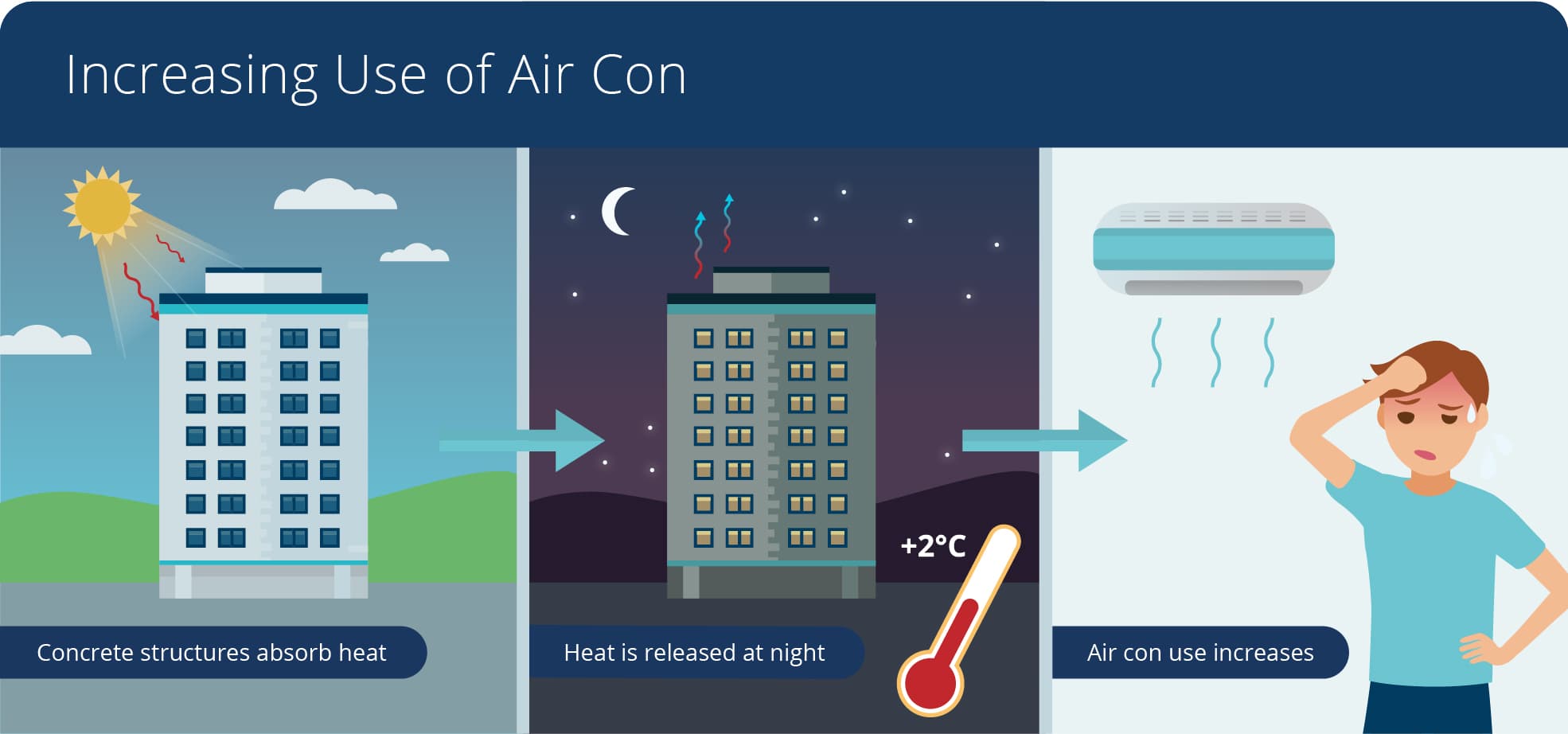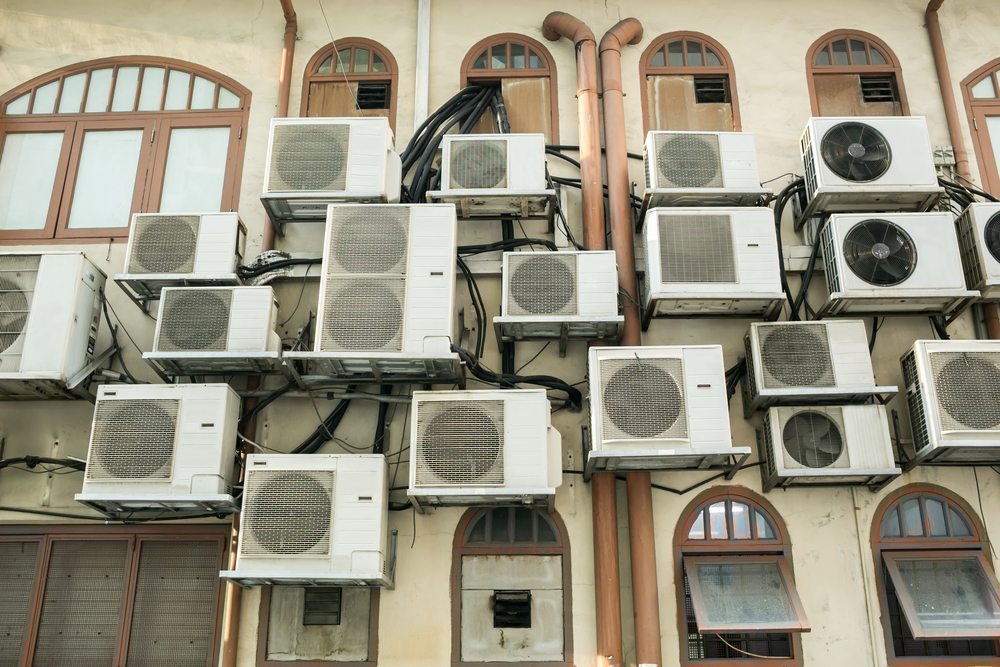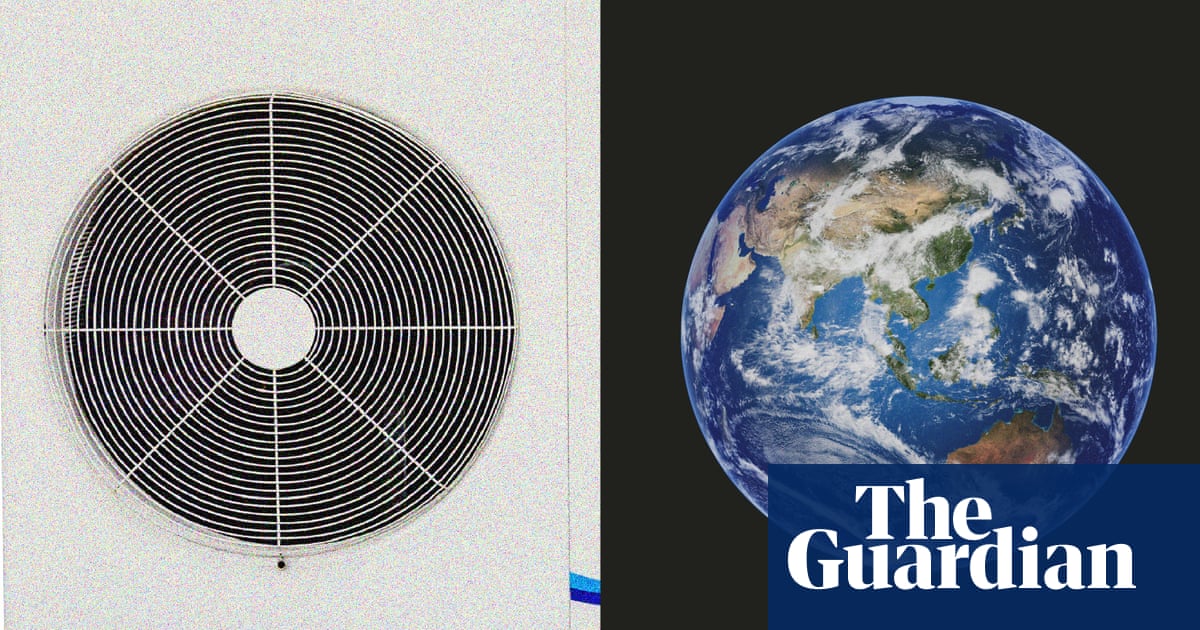Does Aircon Contribute To Global Warming

Many homeowners face the frustrating problem of a struggling air conditioner. It blasts lukewarm air, strains to reach the set temperature, and sends your energy bills soaring. While immediate comfort is your primary concern, it's natural to wonder: does this inefficient air conditioner contribute to global warming? The answer is complex, but understanding the connection empowers you to take action.
This article will guide you through troubleshooting common AC problems, exploring their environmental impact, and providing practical DIY fixes. We'll also pinpoint when professional help is essential, ensuring both your comfort and a lighter footprint.
Understanding the Connection: ACs and Global Warming
Air conditioners impact global warming in two primary ways:
- Energy Consumption: AC units consume significant electricity. If this electricity is generated from fossil fuels (coal, natural gas), it releases greenhouse gases (primarily carbon dioxide) into the atmosphere, contributing to climate change.
- Refrigerant Leaks: Refrigerants are powerful greenhouse gases, often thousands of times more potent than carbon dioxide. Leaks, even small ones, can have a significant environmental impact. Older AC units often use refrigerants with a higher global warming potential.
Therefore, an inefficient AC unit compounds both of these problems. It consumes more energy and is potentially more prone to refrigerant leaks due to age and wear.
Troubleshooting Your Struggling AC: A Step-by-Step Guide
Before calling a technician, follow these steps to diagnose and potentially fix common issues. Always prioritize safety. Turn off the AC unit at the breaker before performing any maintenance.
Step 1: Check the Thermostat
This might sound obvious, but it's the most common culprit. Ensure the thermostat is set to "Cool" and the desired temperature is lower than the current room temperature.
DIY Fix:
- Replace Batteries: Low batteries can cause inaccurate readings and malfunctioning controls.
- Reprogram Thermostat: If you have a programmable thermostat, double-check the schedule and settings.
- Calibrate Thermostat: Some thermostats can be calibrated. Consult the manufacturer's instructions.
When to Call a Pro: If the thermostat display is blank or unresponsive after replacing the batteries, or if calibration doesn't resolve the issue, a professional may be needed to repair or replace the thermostat.
Step 2: Inspect the Air Filter
A dirty air filter restricts airflow, forcing your AC unit to work harder and reducing its cooling efficiency. This increased strain leads to higher energy consumption and potential overheating.
DIY Fix:
- Locate the Air Filter: Typically located in the indoor unit, often behind a removable panel. Consult your AC unit's manual for the exact location.
- Remove and Inspect: Hold the filter up to the light. If you can't see through it easily, it's time to clean or replace it.
- Clean or Replace: Washable filters can be cleaned with water and mild detergent. Allow them to dry completely before reinstalling. Disposable filters should be replaced with a new filter of the same size and MERV (Minimum Efficiency Reporting Value) rating.
When to Call a Pro: While replacing the filter is a simple task, consistent clogging despite regular replacement could indicate a larger issue, such as a problem with your ductwork.
Step 3: Examine the Outdoor Unit (Condenser)
The outdoor unit is responsible for releasing heat. If it's blocked or dirty, it can't function efficiently.
DIY Fix:
- Clear Debris: Remove any leaves, branches, grass clippings, or other obstructions from around the unit. Ensure there's at least two feet of clearance on all sides.
- Clean the Fins: Use a garden hose with a gentle spray nozzle to clean the condenser fins. Spray from the inside out to avoid bending the fins. You can also use a fin comb to straighten bent fins.
When to Call a Pro: If the condenser fins are severely damaged or corroded, or if the fan is making unusual noises, it's best to consult a professional.
Step 4: Check the Indoor Unit (Evaporator)
Similar to the outdoor unit, the indoor unit needs to be clean and unobstructed for optimal performance. However, accessing the evaporator coils can be more complex.
DIY Fix:
- Visually Inspect: Check for signs of ice buildup on the evaporator coils. This can be caused by restricted airflow, low refrigerant, or a malfunctioning expansion valve. If you see ice, turn off the AC immediately.
- Clean Accessible Areas: Using a brush attachment on your vacuum cleaner, carefully clean any accessible dust or debris from around the evaporator unit. Do not attempt to disassemble the unit further than what is easily accessible.
When to Call a Pro: If you see ice buildup, suspect mold growth, or cannot easily access the evaporator coils for cleaning, contact a professional immediately. Trying to clean the coils yourself without proper knowledge can damage the unit and release refrigerant.
Step 5: Inspect the Condensate Drain Line
The condensate drain line removes moisture from the air conditioning process. If it becomes clogged, water can back up, potentially damaging your home and reducing the AC's efficiency.
DIY Fix:
- Locate the Drain Line: Usually a PVC pipe near the indoor unit.
- Check for Clogs: Look for standing water in the drain pan or dampness around the unit.
- Clear the Line: Use a wet/dry vacuum to suck out any clogs from the drain line. You can also try pouring a cup of vinegar down the drain line to dissolve minor clogs.
When to Call a Pro: If you cannot clear the drain line with a vacuum or vinegar, or if you suspect the clog is located deep within the line, a professional can use specialized tools to remove stubborn blockages.
When Professional Intervention is Necessary
While many AC issues can be resolved with simple DIY fixes, certain problems require the expertise of a qualified HVAC technician. Ignoring these issues can lead to further damage, costly repairs, and potentially hazardous situations.
- Refrigerant Leaks: Refrigerant is a hazardous substance. Detecting and repairing leaks requires specialized equipment and knowledge. Never attempt to handle refrigerant yourself.
- Electrical Problems: AC units involve high voltage electricity. If you suspect an electrical issue (e.g., burning smell, sparking), immediately turn off the unit at the breaker and call a professional.
- Compressor Issues: The compressor is the heart of the AC unit. If it's malfunctioning (e.g., loud noises, failure to start), it likely needs to be repaired or replaced by a professional.
- Significant Ice Buildup: As mentioned earlier, excessive ice buildup indicates a serious problem that requires professional diagnosis and repair.
- Lack of Cooling After Troubleshooting: If you've followed all the DIY steps and your AC unit is still not cooling properly, there may be a more complex issue requiring professional attention.
- Old or Inefficient Units: If your AC unit is over 10-15 years old, it may be nearing the end of its lifespan. A professional can assess its efficiency and recommend a replacement with a more energy-efficient model, reducing your environmental impact and energy bills.
Minimizing Your AC's Environmental Impact
Beyond troubleshooting and repairs, consider these strategies to further reduce your AC's contribution to global warming:
- Use Your AC Wisely: Avoid overcooling your home. Set the thermostat to a comfortable but energy-efficient temperature (e.g., 78°F when you're home, higher when you're away).
- Utilize Fans: Ceiling fans and portable fans can help circulate air and make you feel cooler, allowing you to raise the thermostat setting.
- Improve Insulation: Proper insulation in your walls, attic, and windows reduces heat gain, minimizing the need for air conditioning.
- Seal Air Leaks: Caulk and weatherstrip around windows and doors to prevent cool air from escaping and warm air from entering.
- Plant Trees: Shade trees planted strategically around your home can reduce the amount of sunlight that enters, lowering the cooling load on your AC unit.
- Consider a Smart Thermostat: Smart thermostats learn your preferences and automatically adjust the temperature to optimize energy efficiency.
- Regular Maintenance: Schedule regular maintenance with a qualified HVAC technician to ensure your AC unit is running efficiently and to identify and address potential problems early on.
- Upgrade to a High-Efficiency Unit: When it's time to replace your AC unit, choose a model with a high SEER (Seasonal Energy Efficiency Ratio) rating. These units are designed to consume less energy. Also, consider models that use more environmentally friendly refrigerants.
Conclusion: Empowering Action
Understanding how your air conditioner impacts the environment is the first step towards taking responsible action. By following these troubleshooting steps, addressing common issues, and adopting energy-efficient practices, you can reduce your AC's contribution to global warming while enjoying a comfortable home. Remember to prioritize safety and seek professional help when necessary. Every small effort contributes to a more sustainable future.










